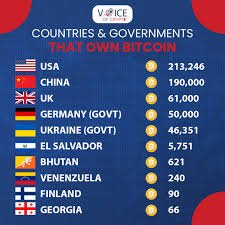Bitcoin Breaks $100K: The Institutional Surge and Crypto’s Next Bull Run

Bitcoin, the original cryptocurrency, is once again capturing global attention as it surges toward new all-time highs, recently crossing the $100,000 mark and tasting $104,000 on May 9, 2025. This meteoric rise, fueled by unprecedented institutional adoption, evolving regulatory landscapes, and macroeconomic shifts, signals not only a transformative moment for Bitcoin but also a broader impact on the cryptocurrency ecosystem, including altcoins, and the potential for an impending bull run. As governments, major financial institutions, and hedge funds increasingly embrace Bitcoin, the stage is set for a seismic shift in the global financial order. This article explores the implications of Bitcoin’s resurgence, its influence on altcoins, the cyclical nature of crypto bull runs, and the pivotal role of institutional and governmental involvement.
Bitcoin’s Rally: A New Peak, A New Narrative
Bitcoin’s price trajectory in 2024 and early 2025 has been nothing short of remarkable, with a year-to-date increase of over 114% and a surge of nearly 150% in 2024 alone. This rally, which saw Bitcoin break through the $100,000 barrier for the first time, is driven by a confluence of factors that distinguish this cycle from previous ones. Unlike the retail-driven bull markets of 2017 and 2021, the current surge is characterized by institutional and governmental participation, fundamentally altering Bitcoin’s role in the global economy.
The Bitcoin halving in April 2024, which reduced the block reward to 3.125 BTC, tightened supply dynamics, as fewer new coins entered circulation. Historically, halvings have catalyzed bull markets by creating scarcity, and this cycle appears no different, with prices climbing steadily post-halving. However, the halving’s impact is amplified by new demand drivers: spot Bitcoin exchange-traded funds (ETFs), institutional custody solutions, and, most notably, government-backed initiatives. The approval of spot Bitcoin ETFs in January 2024, such as BlackRock’s iShares Bitcoin Trust (IBIT) with over $45 billion in assets under management, opened the floodgates for institutional capital. These ETFs have made Bitcoin accessible to pension funds, retirement accounts, and sovereign wealth funds, reducing reliance on retail enthusiasm.
Institutional Adoption: The Game-Changer 
The entry of major financial institutions and hedge funds into the Bitcoin market marks a paradigm shift. Public companies like MicroStrategy, holding 439,000 BTC at an average purchase price of $61,725, and Tesla, with over 10,500 BTC, have integrated Bitcoin into their corporate treasuries, signaling confidence in its long-term value. Hedge funds, once skeptical, are now allocating significant portions of their portfolios to Bitcoin, drawn by its uncorrelated returns and inflation-hedging potential.
BlackRock CEO Larry Fink’s forecast of Bitcoin reaching $700,000 underscores the growing institutional optimism. Firms like Standard Chartered and Bernstein project prices between $200,000 and $250,000 by the end of 2025, citing accelerating institutional adoption and a favorable regulatory environment. The options trading market for Bitcoin ETFs is also expanding, attracting “long-only” investors like pension funds, which could drive profound price appreciation if even 1% of the $40 trillion U.S. retirement market flows into Bitcoin.
This institutional influx is not merely speculative; it reflects a strategic shift. Bitcoin’s fixed supply of 21 million coins positions it as “digital gold,” a hedge against fiat currency devaluation and geopolitical uncertainty. In hyperinflationary environments like Venezuela, where Bitcoin accounts for 9% of remittances, and Zimbabwe, its role as a store of value is already evident. As central banks diversify reserves, Bitcoin is emerging as a viable asset for hedging currency risk and supporting national balance sheets.
Governments and the Strategic Bitcoin Reserve

Perhaps the most groundbreaking development is the involvement of governments, particularly in the United States. In March 2025, an executive order established the Strategic Bitcoin Reserve, directing the U.S. Treasury to manage forfeited BTC as a reserve asset. This move, coupled with a proposed bill to accumulate 5% of global Bitcoin supply over five years, signals a radical departure from previous governmental skepticism. The order aims to harness Bitcoin’s scarcity and security, positioning the U.S. as a leader in the digital asset space.
Globally, other nations are following suit. Taiwan’s politicians have urged inclusion of Bitcoin in reserve compositions, while countries like China are exploring central bank digital currencies (CBDCs) and cryptocurrency integration. This governmental embrace lends Bitcoin unprecedented legitimacy, reducing the legal uncertainties that once deterred investors. The concept of a national digital asset stockpile could solidify Bitcoin’s status as a global reserve asset, akin to gold post-1971.
However, this shift is not without risks. Critics argue that increased liquidity from government and institutional involvement could facilitate illicit activities, as Bitcoin’s pseudonymous nature has historically enabled ransomware payments and sanctions evasion. Regulatory oversight remains a double-edged sword: while it legitimizes the market, excessive controls could stifle innovation or drive activity to unregulated jurisdictions.
Altcoins and the Ripple Effect
Bitcoin’s rally has profound implications for altcoins, which often follow its lead during bull cycles. Historically, Bitcoin’s dominance peaks early in a bull run, followed by capital rotation into altcoins as retail investors chase higher returns. However, this cycle appears different, with institutional and governmental focus squarely on Bitcoin. Posts on X suggest that new money from institutions and nations is absorbing Bitcoin supply, potentially delaying the traditional “altseason” where altcoins outperform.
That said, altcoins are not dormant. Ethereum, trading above $2,490, benefits from its role in decentralized finance (DeFi) and smart contracts, while projects like XRP and Cardano show resilience due to their utility in cross-border payments and scalability. Analysts on X predict an altseason triggered by Bitcoin’s stabilization above $100,000, with some forecasting Ethereum renewing its all-time high and select altcoins achieving 100–200x returns.
The correlation between Bitcoin and altcoins remains strong, but the degree of correlation varies. As Bitcoin’s price stabilizes, retail interest in the broader crypto ecosystem surges, driven by media coverage and FOMO. However, altcoins face unique challenges, including regulatory scrutiny and competition, which could temper their gains compared to Bitcoin’s institutionally backed rally.
The Bull Run Cycle: A New Trajectory?
Bitcoin’s market cycles, typically aligned with halving events every four years, have historically followed a pattern of accumulation, parabolic growth, and correction. The current cycle, however, may break this mold. The executive order and institutional adoption could usher in a “supercycle” of sustained growth, potentially eliminating the severe “crypto winter” corrections of past cycles. Analysts suggest Bitcoin could reach $320,000 in a full-scale bull run, driven by supply absorption and diminishing returns in traditional assets.
On-chain data supports this optimism. Over 3 million BTC have returned to a state of profit, and the market is testing key resistance levels at $93,000–$95,000, signaling a potential breakout. The historical trend of 40% rallies above moving averages in previous cycles suggests Bitcoin could climb to $160,000–$200,000 by mid-2025, with altcoins following suit in a delayed but explosive rally.
Yet, risks persist. Bitcoin’s volatility, driven by concentrated ownership and speculative trading, could lead to sharp corrections. Wash trading, estimated at 51% of reported Bitcoin trading volume, distorts market signals and erodes investor confidence. Moreover, macroeconomic factors, such as U.S. monetary policy tightening, have historically pressured Bitcoin prices, particularly in bull markets.
The Bigger Picture: Bitcoin’s Role in Finance
Bitcoin’s resurgence is more than a price story; it’s a revolution in money and finance. Born from the 2008 financial crisis, Bitcoin was designed to bypass centralized institutions, offering a decentralized, borderless store of value. Today, its integration into traditional finance—through ETFs, corporate treasuries, and government reserves—paradoxically fulfills and challenges its original vision.
For investors, Bitcoin offers a hedge against inflation and currency devaluation, particularly in turbulent economies. For altcoins, it sets the tone for market sentiment, with potential for outsized gains in a bull run. For governments and institutions, it represents a strategic asset in a digital-first world. However, its energy-intensive mining, estimated to consume as much power as entire countries, and its use in illicit activities remain points of contention.
 Conclusion: Seizing the Opportunity
Conclusion: Seizing the Opportunity
As Bitcoin surges toward new highs, its impact reverberates across the crypto ecosystem and beyond. The involvement of governments, financial institutions, and hedge funds marks a new era of legitimacy and adoption, potentially reshaping the traditional four-year cycle into a sustained growth trajectory. Altcoins, while currently overshadowed, stand to benefit from Bitcoin’s momentum, with a potential altseason looming.
Investors must navigate this landscape with caution, recognizing Bitcoin’s volatility and the regulatory risks that accompany its mainstreaming. Consulting a financial advisor is prudent, as past performance is not indicative of future results. Yet, the opportunity is undeniable: Bitcoin is no longer a fringe asset but a cornerstone of the evolving financial system. As one X user put it, “Everyone’s worried about when to sell Bitcoin when they should be worried about never owning enough.” The bull run is here, and its implications will shape the future of finance for years to come.
Disclosure Statement
This article contains forward-looking statements regarding the company featured. These statements are based on current expectations and assumptions and involve known and unknown risks, uncertainties, and other factors that may cause actual results to differ materially from those expressed or implied. Readers are cautioned not to place undue reliance on forward-looking statements.
The author owns shares of the company featured in this article, purchased in the open market. The author and GEKKOvsWOLF have no business relationship with the company and have received no compensation for the creation, publication, or distribution of this content. This article reflects the personal opinion of the author and is provided for informational purposes only. It does not constitute financial, investment, or legal advice.
Readers are strongly encouraged to perform their own due diligence and consult with a licensed financial advisor before making any investment decisions. Investing in junior resource companies or crypto-related projects involves significant risks, including the potential loss of principal. For comprehensive and up-to-date information, refer to the company’s public filings on SEDAR+, OTC Markets, EDGAR, and other official disclosure sources.